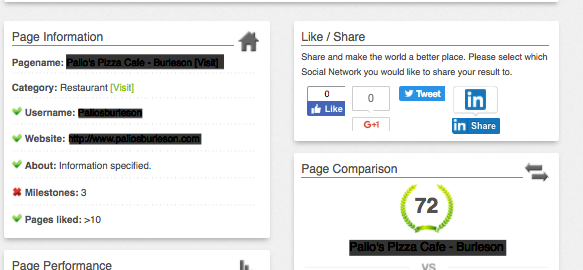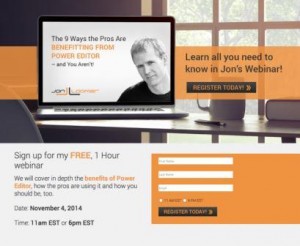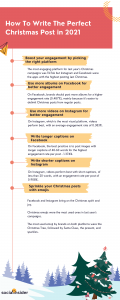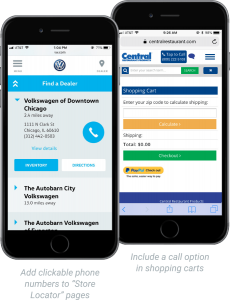- There are 1.8B monthly active users on Facebook (Source: FB latest financial disclosed on 11/02/16)
- Age 25 to 34, at 29.7% of users, is the most common age demographic.
- 41% of US small businesses are on Facebook
- Organic reach of Facebook posts ~ 2%
With these kinds of stats it is imperative that small businesses put their best foot forward on Facebook. In this blog we talk about different tools and strategies to analyze your Facebook page performance, what you need to do in order to fix chinks in your armor and a brief about Facebook advertising options.
Analyze: Our go-to tool to analyze is “Likealyzer” which examines your page on a scale of 100. It provides information about how your page is doing on multiple factors and provides insights into what kind of corrective action you can take in order to increase your score. Another cool feature about this tool is the statistics page which provides information about different pages in different categories across different countries. You can use this to find the best page in the same industry within the same country and see what aspects you can copy from that page.

- AgoraPulse Barometer: This requires you to login using your Facebook page and it provides your page performance based on your posts and compared against other pages in the tool database. The issue with this comparison is that it compares against all pages and is not restricted within the same category. AgoraPulse has some other free social media tools that you might find useful
 Social Bakers: A report comparing your page against your competitor would be sent to your email. The report analyzes page audience, audience growth as well as showcasing which content is effective from an engagement perspective but it generates only for a week. Apart from the Facebook page analysis there are a number of other free tools that SocialBakers provide.
Social Bakers: A report comparing your page against your competitor would be sent to your email. The report analyzes page audience, audience growth as well as showcasing which content is effective from an engagement perspective but it generates only for a week. Apart from the Facebook page analysis there are a number of other free tools that SocialBakers provide.

Page Optimization: The next step after page analysis is to optimize the page with information that your customers are looking for. Having the right user name with an appealing cover picture with accurate dimensions and having a CTA button to gather customer information are the characteristics of an optimized Facebook page. The below infograph which details about the 6 main areas that one has to concentrate. Apart from this the “Page Info” has to have the right information which includes your business phone number, email ID etc.

Content is the King: Now that we have our page optimized its time to turn to the most important aspect of a business page – having the right content is what makes or breaks a page. Some of the guidelines that one has to follow when thinking about content for a page are-
- Understand who your customer is – look at Facebook Insights which would give an idea about a typical customer profile. Understand what they are looking for, what appeals to them etc
- Come up with a content strategy based on your customer needs. Your content should have a mix of pictures, videos and user generated content
- The primary purpose is to elicit customer engagement – so a mix of questions, contests, offers should be planned and a content plan has to be made which gives an outlay of what all content is planned for a given period of time
- Use the above analysis tools to keep checking as to whether the content you have created is working along with timings etc
- Analyze your content to see if it meets any one or more of these criteria – Awareness, Customer Engagement and Business Development/Sales
Advertising: With organic reach around 2% it is imperative that you have to spend some $ $ on advertising on Facebook. Fortunately the impact of your ad dollars go a very long way given the fact that you can choose your target audience for your ads, set budgets and also analyze the effectiveness of your ads. Facebook provides you with a range of tools based on your objective of running a campaign including calculating the effectiveness of these campaigns on the footfall into your business.
- Choose the objective for your campaign – brand awareness, generating leads for your business or people to claim your offer
- Define your target audience using Facebook’s detailed targeting parameters, location and budget
- Come up with the visuals that would go with the campaign – you can either create a single image, a video or a slideshow. Your images’ text should be within the 20% limit and you can check it using this Image Text Check tool
The below screenshot gives you an idea about how you can effectively plan your advertising campaigns and what kind of tools that Facebook has to offer you.

By following the above strategies your Facebook page should be seeing a marked improvement. Do let us know if you have adopted any other strategies that worked for your page and how you have monitored the success.
Digital & Social Articles on Business 2 Community(50)






